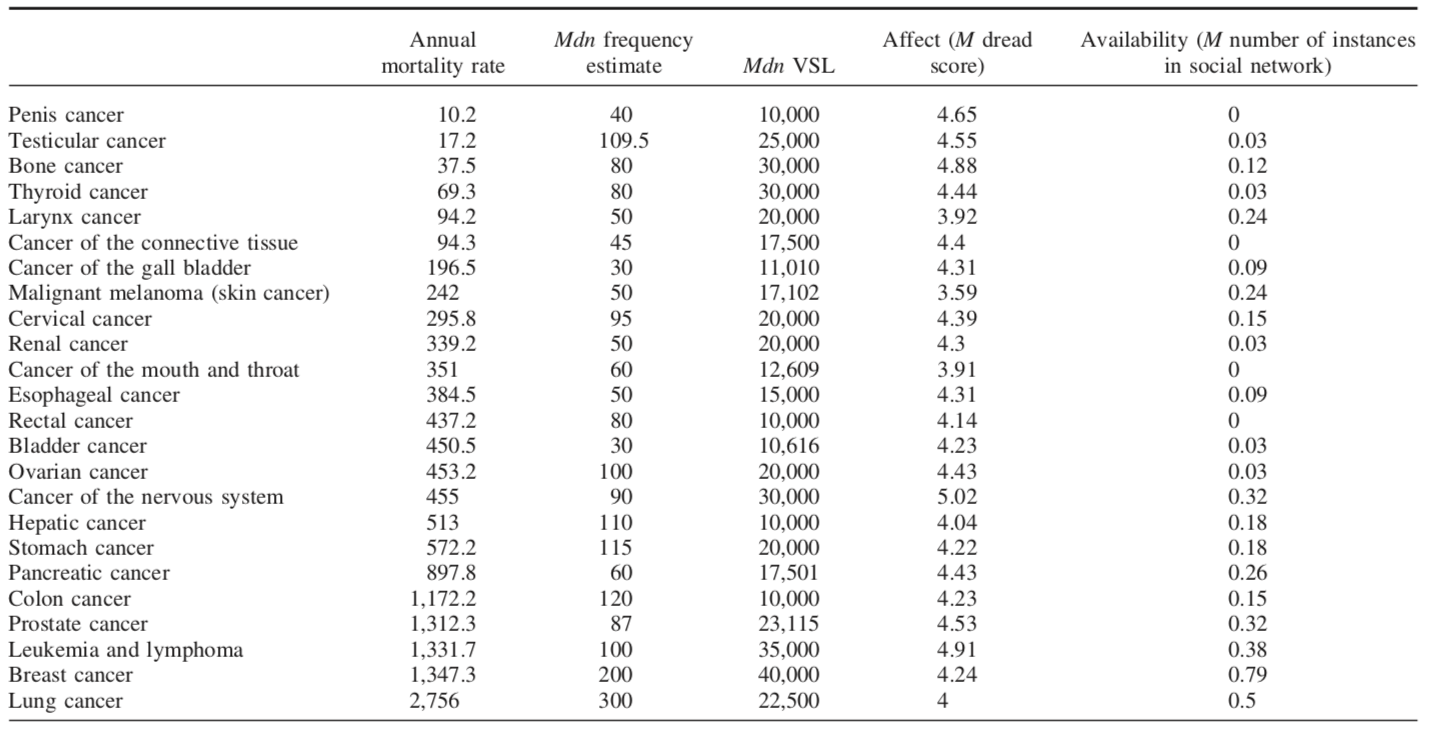Click here and press the right key for the next slide.
(This may not work on mobile or ipad. You can try using chrome or firefox, but even that may fail. Sorry.)
also ...
Press the left key to go backwards (or swipe right)
Press n to toggle whether notes are shown (or add '?notes' to the url before the #)
Press m or double tap to slide thumbnails (menu)
Press ? at any time to show the keyboard shortcuts

Pachur et al 2012, table 1
Judgements about whether an action a cancer is good or bad
- frequent (which cause of death has a higher annual mortality rate?)
- risky (which cause of death represents a higher risk of dying from it?)
- worth spending lots to avoid (how much money should be spent to avoid one fatality due to this cause of death? Value of a Statistical Life (VSL))
Note: the attributes to be tracked (frequency, risk & VSL) are inaccessible
What might people compute that would enable their judgements to track frequency, risk and VSL?
Candidate Accessible attributes:
- how easily can I bring to mind a case of this?
- how does imagining it makes me feel?
Two heuristics
Availability Heuristic
The easier it is to bring a case of this cancer to mind, the more frequent or risky it is and the higher its VLS should be.
Is this really a heuristic?
Affect Heuristic
The more dread you feel when imagining it, the more frequent or risky it is and the higher its VLS should be.
Is this really a heuristic?
Hypothesis:
The Availablity Heuristic dominates frequency judgements ,
whereas the Affect Heuristic dominates risk and VSL judgements.
Prediction:
Number of cases in a subject’s social network will better predict frequency judgements,
whereas feelings of dread will better predict risk and VSL judgements.
Findings:
both predictions broadly confirmed.
Pachur et al, 2012

Pachur et al, 2012 table 1
Summary
The Affect Heuristic:
The more dread you feel when imagining it, the more frequent or risky it is.
In general, heuristics
involve subsituting inaccessible for accessible properties;
and hypotheses about them generate testable predictions.
To find evidence for the operation of a heuristic, test a prediction about the correlates or causes of judgements.
How is this relevant?
1
Humans use an affect heuristic in some cases;
so the idea they use one in making unreflective ethical judgements
is at least worth considering.
2
We can use Pachur et al (2012) as a model
for what would count as evidence
that humans use an affect heuristic
in making unreflective ethical judgements ...
What do adult humans compute that enables their unreflective judgements to track frequency, VSL and risk?
What do adult humans compute that enables their unreflective judgements to track moral attributes (such as wrongness)?
affect (and availability) heuristics
Background
Frequency, VSL and risk are inaccessible.
Evidence
Affect and availability predict risk and frequency judgements, respectively
???